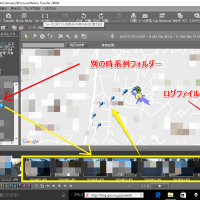



I do not really know what to say...
I have taken refuge into this new hideout and
starting from scratch! I suppose I will have to
show the premises on which I work, but they can
come later, in time, when I am well settled in this
new hideout of mine. It will take some time, I should think...
Now, today's photos apart I must start by my
latest insight into the workings of my bandsaw, and
in particular, my blades and how they crack and are
made useles.

This is a schematic diagram showing what a bandsaw is
all about. Red line corresponds to the actual blade and
the figures below are two blades of different thickness.
I knew blades are consumables, but I had hoped that
the blade I had changed about a month earlier would
last, at least for a few months.
Well, it happened only after a month or so. I was cutting
the top profile of the spoons as shown in the last photo.
I noticed that the blade was going back and forth while cutting
a spoon profile. I immediately knew something was going
terribly wrong and opened the cover. I found a crack in the
blade, a single crack.
It was enough for me to know that it had come to the end
of its useful life so soon after replacement.
Earlier, I had deduced the reason for blade breakage.
It is due to metal fatigue. On the schematic blades
are subjected to bending at A and D and straitening
at B and C. Bending is not sharp, of course, but my machine
does 3000 RPM, and consequently bending and unbending
takes place 6000 times per minute.
I use the machine everyday and my gestimate is that I use it
for over 30 hours/month. What does that come to?
6000X60X30!
Put simply, this corresponds to just over 10 million
times of bending and unbending!
No wonder they tend to crack so easily!
In reality, I was aghast and remained silent for a good
few minutes when this occurred. I did not know
what to do.
I was resignd to the idea of blades being consumables,
but then JPY 3000/month! Just incredible!
I then toyed with the idea of going back to my room
to get hold of a new, but the same 16mm blade. As it happened
I had an age old 8mm blade hanging on the walls
of my workshop. I installed one of them, just in case
it might work. To wonder! I hoped and it did!
Of course, prior to it I checked the blade surface
for anything unusual and there was none I could see.
With the broken 16mm there were quite a few lines
running parpendicular to the motion of the blade, an
indication that they will also crack at those lines.
Blades run in a semicircular orbit and you could
expect to find scratch lines running pararell to it,
but not at right angles to the motion!
Anyway, what I found is as follows. 8 mm blades are
much thinner, and I would like to believe that because of
that metal fatigue is less of a problem for them.
So far the old 8 mm blade is running OK. Perhaps,
I should oder only 8 mm blades in future!
There is a slight hitch, however. Refer to the figures below.
One might think that with 16 mm blades it is difficult to
cut curvatures, due to the width of the blade, as compared to
8 mm blades.
In fact, it is easlier to cut along small curvatures with
16 mm blades. If you are standing still long spikes as shown
can make an ample room for directional changes.
With 8mm blades they tend to cut straight, not wanting to
change cutting directions, not surprising, as they
do not have long spikes sticking out from the blade
However, I can live with this. Long endurance, I expect,
due to their thin blade profiles, is a gift. Anyway,
that is my theory!
Most of today's work concerns the photo 3, they are
short (17.5cm) chopsticks for girls to use with their
obentou lunch boxes!























※コメント投稿者のブログIDはブログ作成者のみに通知されます